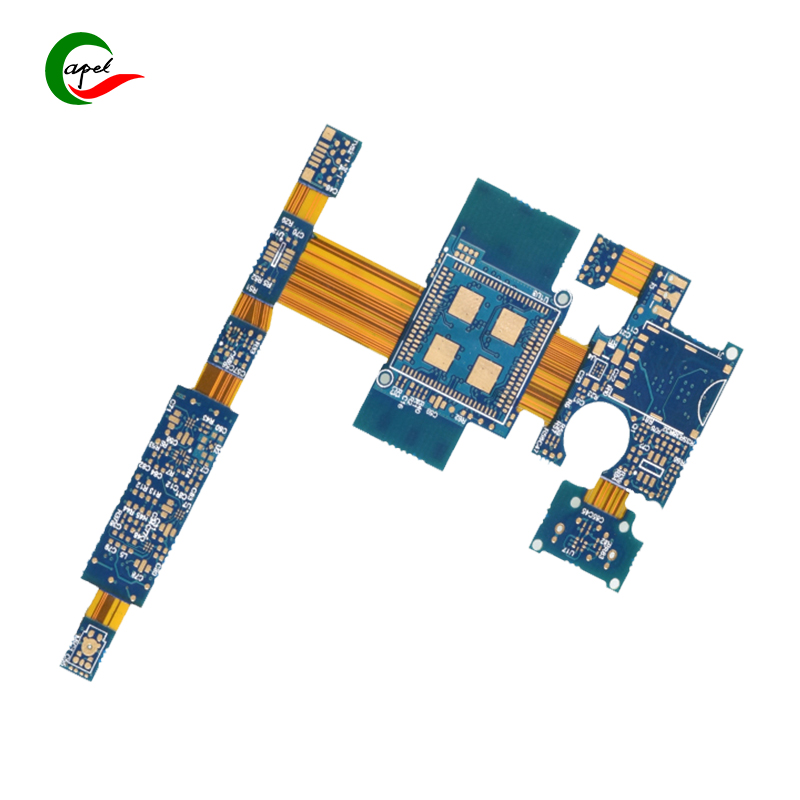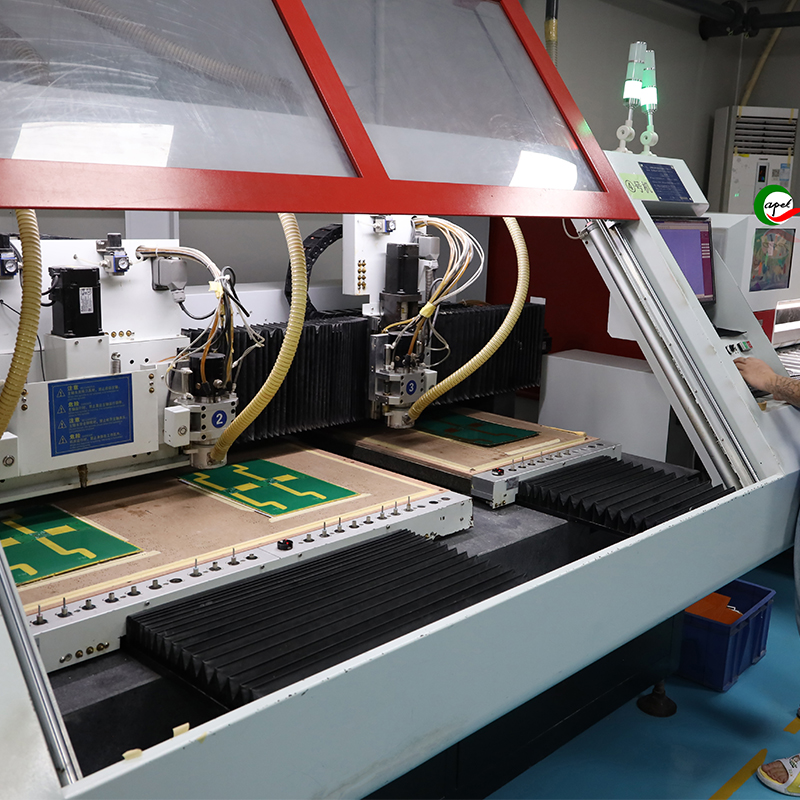In the fast-paced electronics industry, time is often of the essence when bringing innovative products to market. Rigid-flex PCB (Printed Circuit Board) manufacturing is a particular area where fast turnaround is critical. Combining the advantages of rigid and flexible PCBs, these advanced circuit boards are popular for their ability to meet compact design requirements and withstand harsh environmental conditions. In this article, we’ll explore the various factors that affect the cost of fast-turn rigid-flex PCBs manufacturing.
Exploring the basics of rigid-flex PCBs :
Before diving into the cost aspects, it is important to understand the basic properties of rigid-flex PCBs.
Rigid-flex PCB is a special type of circuit board that combines rigid and flexible materials in its construction. They are designed with alternating rigid and flexible partial layers, interconnected by conductive traces and vias. This combination enables the PCB to withstand bending, folding and twisting, allowing three-dimensional molding and fitting into small or irregularly shaped spaces.
The rigid portion of the board is made from traditional rigid PCB materials such as fiberglass (FR-4) or composite epoxy. These sections provide structural support, housing components, and connection traces. Flexible parts, on the other hand, are usually made of polyimide or a similar flexible material that can withstand repeated bending and bending without breaking or losing function. The conductive traces and vias that connect the layers in a rigid-flex PCB are also flexible and can be made of copper or other conductive metals. They are designed to create the necessary electrical connections between components and layers while accommodating the flex and flex of the board.
Compared with traditional rigid PCBs, rigid-flex PCBs have several advantages:
Durability: The combination of rigid and flexible materials makes rigid-flex PCBs more resistant to mechanical stress and vibration, reducing the risk of damage or failure in applications with frequent movement or shock.
Space-saving: Rigid-flex PCBs can be folded or bent into compact shapes, making more efficient use of available space. This is especially beneficial for applications where size and weight are critical factors.
Reliability: Eliminating connectors and cables from a rigid-flex PCB design reduces the number of potential points of failure, thereby improving overall reliability. The integrated structure also reduces the risk of signal interference or transmission loss. Reduced weight: By eliminating the need for additional connectors, cables, or mounting hardware, rigid-flex PCBs help reduce the overall weight of electronic devices, making them ideal for aerospace, automotive, and portable applications.
Key Factors Affecting Fast Turn Rigid Flex PCB Manufacturing Cost:
Several factors affect the overall cost of manufacturing a fast-turnaround rigid-flex PCB:
Design Complexity: The complexity of circuit design is an important factor affecting the manufacturing cost of rigid-flex boards. More complex designs with more layers, connections and components require more detailed and precise manufacturing processes. This complexity increases the labor and time required to manufacture the PCB, resulting in higher costs.
Fine marks and spaces: Modern PCB designs often require tighter tolerances, smaller trace widths, and smaller trace spacing to accommodate increasing functionality and miniaturization. However, these specifications require more advanced manufacturing techniques, such as high-precision machinery and special tooling. These factors increase manufacturing costs as they require additional investment, expertise and time.
material selection: The choice of substrate and adhesive materials for the rigid and flexible parts of the PCB also affects the overall manufacturing cost. Different materials have different costs, some more expensive than others. For example, using high-performance materials such as polyimide or liquid crystal polymers can enhance the durability and flexibility of PCBs, but increase manufacturing costs.
Manufacturing process: Yield plays a critical role in the manufacturing cost of rigid-flex PCBs. Higher volumes often lead to economies of scale, as the fixed costs of setting up a manufacturing process can be spread over more units, reducing unit costs. Conversely, it can be more expensive to manufacture small batches or prototypes because the fixed costs are spread over a smaller number of units.
The turnaround time required for PCBs is another key factor affecting manufacturing costs. Fast turnaround requests often require expedited manufacturing processes, increased labor and optimized production schedules. These factors may result in additional costs, including overtime for employees and expedited charges for materials or services.
Quality Standards and Tests: Meeting specific quality standards (such as IPC-A-600 Level 3) may require additional testing and inspection steps during the manufacturing process. These quality assurance measures add cost because they involve additional equipment, labor and time. Additionally, special testing requirements, such as environmental stress testing, impedance testing, or burn-in testing, may add complexity and cost to the manufacturing process.
Additional Cost Considerations When Manufacturing Fast Turn Rigid Flex PCB:
In addition to the main factors above, there are other cost factors to consider when manufacturing fast turnaround rigid-flex
PCBs:
Engineering and Design Services: PCB prototyping is an important step in the fast turnaround rigid-flex PCB manufacturing process. The complexity of the circuit design and the expertise required to develop the design impacts the cost of engineering and design services. Highly complex designs may require more specialized knowledge and experience, which increases the cost of these services.
Design iterations: During the design phase, multiple iterations or revisions may be required to ensure the functionality and performance of the rigid-flex board. Each design iteration requires additional time and resources, which increases overall manufacturing costs. Minimizing design revisions through thorough testing and collaboration with the design team can help reduce these costs.
Component procurement: Sourcing specific electronic components for rigid-flex boards affects manufacturing costs. The cost of a component may vary depending on factors such as its complexity, availability and quantity required. In some cases, specialized or custom parts may be required, which may be more expensive and may increase manufacturing costs.
Component Availability: Availability and lead times of specific components affect how quickly a PCB can be manufactured. If certain components are in high demand or have long lead times due to scarcity, this can delay the manufacturing process and potentially increase costs. It is important to consider component availability when planning manufacturing schedules and budgets.
Assembly complexity: The complexity of assembling and soldering components onto rigid-flex PCBs also affects manufacturing costs. Fine-pitch components and advanced assembly techniques require additional time and skilled labor. This can add to overall manufacturing expense if assembly requires specialized equipment or expertise. Minimizing design complexity and simplifying the assembly process can help reduce these costs.
Surface finish: The choice of PCB surface finish also affects manufacturing costs. Different surface treatments, such as ENIG (Electroless Nickel Immersion Gold) or HASL (Hot Air Solder Leveling), have different associated costs. Factors such as material costs, equipment requirements, and labor can affect the overall expense of the chosen surface finish. These costs must be considered when selecting the proper surface finish for a rigid-flex PCB.
accounting for these additional cost factors in the manufacturing of fast-turnaround rigid-flex PCBs is critical to ensuring efficient budgeting and decision-making. By understanding these factors, manufacturers can optimize their design choices, component sourcing, assembly processes, and surface finish choices for cost-effective production without compromising quality.
Manufacturing fast-turn rigid-flex PCBs involves several factors that affect the cost of the overall production process. Design complexity, material selection, manufacturing processes, quality standards, engineering services, component sourcing and assembly complexity all play a vital role in determining the final cost. In order to accurately estimate the cost of manufacturing a fast turnaround rigid-flex PCB, it is important to consider all of these factors and consult an experienced PCB fabricator who can provide a tailored solution while balancing time, quality and budgetary requirements . By understanding these cost drivers, companies can make informed decisions to optimize their manufacturing processes and efficiently bring cutting-edge products to market.
Shenzhen Capel Technology Co., Ltd.established its own rigid flex pcb factory in 2009 and it is a professional Flex Rigid Pcb Manufacturer. With 15 years of rich project experience, rigorous process flow, excellent technical capabilities, advanced automation equipment,comprehensive quality control system, and Capel has a professional experts team to provide global customers with high-precision, high-quality 1-32 layer rigid flex board, hdi Rigid Flex Pcb, Rigid Flex Pcb Fabrication, rigid-flex pcb assembly,fast turn rigid flex pcb,quick turn pcb prototypes.Our responsive pre-sales and after-sales technical services and timely delivery enable our clients to quickly seize market opportunities for their projects.
Post time: Aug-29-2023
Back








